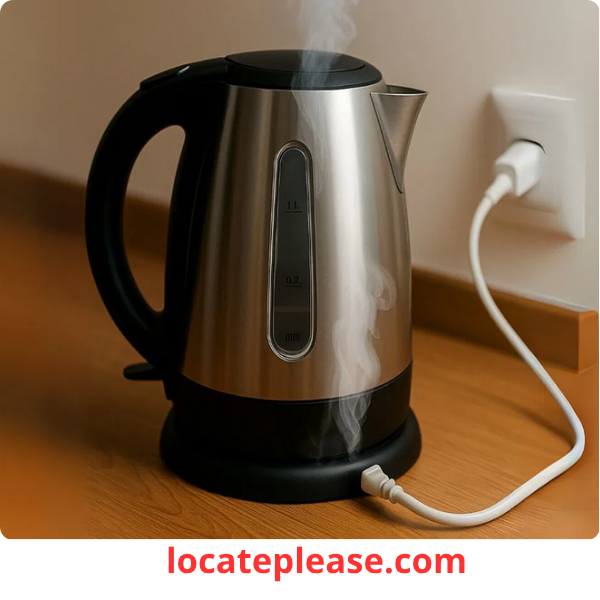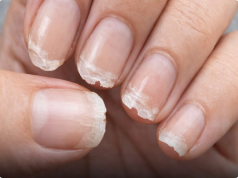Your electric kettle is one of the most efficient appliances in the kitchen — boiling water in minutes with the touch of a button. Whether you’re making tea, coffee, oatmeal, or instant soup, it’s fast, convenient, and reliable.
But here’s the truth:
👉 It’s designed for one thing — boiling water.
Using it for anything else might seem like a clever shortcut, but it can damage your kettle, create health hazards, or even make it unsafe to use.
To keep your kettle working safely and efficiently, here are 5 things you should NEVER put inside it — no matter how tempting it seems.
1. Milk – A Recipe for Disaster
Why it’s dangerous:
Milk is not water. When heated, it scorches, curdles, and sticks to the heating element and interior walls. Unlike water, milk doesn’t fully evaporate — it leaves behind a burnt, smelly residue that’s nearly impossible to clean.
What happens:
- Milk proteins and fats burn onto the heating coil, reducing efficiency
- Spoiled milk becomes a breeding ground for bacteria
- The kettle develops a permanent rancid odor
- Risk of overheating or electrical damage due to clogged components
✅ Safer alternative: Heat milk on the stove or use a microwave — never in your electric kettle.
2. Tea Leaves or Tea Bags – Not Worth the Risk
Why it’s dangerous:
Even though some kettles come with infusers, most standard electric kettles are not designed for steeping tea.
Loose tea leaves or tea bags can:
- Clog the spout or lid vents
- Burn onto the heating element, creating a hard-to-remove film
- Leave behind tannins and oils that affect the taste of future boiled water
Bonus problem: You can’t control steeping time — over-steeped tea becomes bitter, and you risk damaging your kettle.
✅ Safer alternative: Boil water in the kettle, then pour it over tea in a mug or teapot. This gives better flavor and keeps your kettle clean.
3. Anything Salty or With Solids (Like Instant Noodles or Soup)
Why it’s dangerous:
Some people try to save time by tossing instant noodles, ramen, or soup mix into the kettle. Don’t do it.
Salt and seasoning packets are highly corrosive when heated. They can:
- Corrode the metal heating element
- Damage the thermostat or sensors
- Leave behind gunky, sticky residue that’s hard to scrub
- Cause foul odors and lingering tastes in your boiled water
Even worse: solids can clog the spout or heating chamber, leading to overheating or kettle failure.
✅ Safer alternative: Boil water in the kettle, then pour it into a bowl to prepare your noodles or soup.
4. Essential Oils – A Fire Hazard in Disguise
Why it’s dangerous:
Using your kettle as a DIY aromatherapy diffuser might sound relaxing — but it’s dangerous and ineffective.
Essential oils are highly concentrated and not meant to be boiled at high temperatures. When heated in a kettle, they can:
- Leave a greasy, sticky film on internal parts
- Degrade plastic components (in plastic kettles)
- Release toxic fumes when overheated
- Damage the heating element and sensors
✅ Safer alternative: Use a dedicated essential oil diffuser — it’s safer, more effective, and won’t ruin your kettle.
5. Strong Acids (Like Lemon Juice or Vinegar) – Only for Cleaning, Never for Boiling
Why it’s dangerous:
You might have heard that vinegar or lemon juice can descale your kettle — and that’s true.
But there’s a huge difference between cleaning your kettle and boiling acidic liquids for consumption.
Boiling pure lemon juice or vinegar:
- Corrodes metal and plastic parts
- Can damage the heating element and shorten the kettle’s lifespan
- May release harmful fumes, especially in plastic or low-quality kettles
- Leaves behind a strong, unpleasant taste
✅ Safe way to descale:
- Mix equal parts white vinegar and water
- Boil the solution once
- Let it sit for 15–20 minutes
- Empty, rinse thoroughly, and boil plain water twice to remove any residue
👉 Never use strong acids regularly or without proper dilution.
Final Tip: Your Kettle Has One Job — Boil Water
It’s tempting to turn your electric kettle into a multi-cooker, but it’s not built for that.
To keep your kettle:
- Lasting longer
- Tasting clean
- Operating safely
👉 Stick to plain water only.
If you want more versatility, consider:
- A hot pot (great for soups and noodles)
- An electric steamer
- A multi-cooker or induction stove
Final Thoughts: Respect the Kettle
Your electric kettle is a champion of convenience — but only when used correctly.
By avoiding these 5 common mistakes, you’ll:
- Prevent costly damage
- Avoid strange tastes and smells
- Keep your appliance safe and hygienic
So next time you’re tempted to “just quickly” boil milk or make tea inside the kettle…
Pause.
Boil water. Pour. Enjoy.
That’s how you get the best out of your kettle — and keep it working for years to come.
Simple. Safe. Smart.










